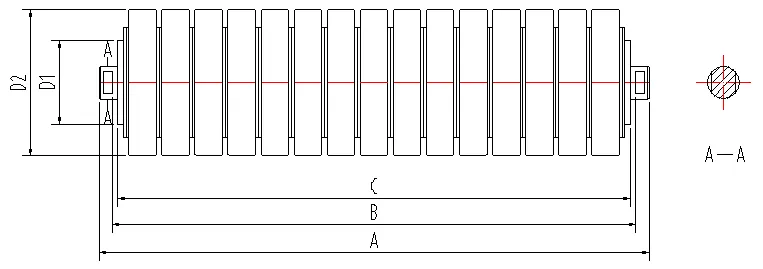 Afrikaans
Afrikaans  Albanian
Albanian  Amharic
Amharic  Arabic
Arabic  Armenian
Armenian  Azerbaijani
Azerbaijani  Basque
Basque  Belarusian
Belarusian  Bengali
Bengali  Bosnian
Bosnian  Bulgarian
Bulgarian  Catalan
Catalan  Cebuano
Cebuano  Corsican
Corsican  Croatian
Croatian  Czech
Czech  Danish
Danish  Dutch
Dutch  English
English  Esperanto
Esperanto  Estonian
Estonian  Finnish
Finnish  French
French  Frisian
Frisian  Galician
Galician  Georgian
Georgian  German
German  Greek
Greek  Gujarati
Gujarati  Haitian Creole
Haitian Creole  hausa
hausa  hawaiian
hawaiian  Hebrew
Hebrew  Hindi
Hindi  Miao
Miao  Hungarian
Hungarian  Icelandic
Icelandic  igbo
igbo  Indonesian
Indonesian  irish
irish  Italian
Italian  Japanese
Japanese  Javanese
Javanese  Kannada
Kannada  kazakh
kazakh  Khmer
Khmer  Rwandese
Rwandese  Korean
Korean  Kurdish
Kurdish  Kyrgyz
Kyrgyz  Lao
Lao  Latin
Latin  Latvian
Latvian  Lithuanian
Lithuanian  Luxembourgish
Luxembourgish  Macedonian
Macedonian  Malgashi
Malgashi  Malay
Malay  Malayalam
Malayalam  Maltese
Maltese  Maori
Maori  Marathi
Marathi  Mongolian
Mongolian  Myanmar
Myanmar  Nepali
Nepali  Norwegian
Norwegian  Norwegian
Norwegian  Occitan
Occitan  Pashto
Pashto  Persian
Persian  Polish
Polish  Portuguese
Portuguese  Punjabi
Punjabi  Romanian
Romanian  Russian
Russian  Samoan
Samoan  Scottish Gaelic
Scottish Gaelic  Serbian
Serbian  Sesotho
Sesotho  Shona
Shona  Sindhi
Sindhi  Sinhala
Sinhala  Slovak
Slovak  Slovenian
Slovenian  Somali
Somali  Spanish
Spanish  Sundanese
Sundanese  Swahili
Swahili  Swedish
Swedish  Tagalog
Tagalog  Tajik
Tajik  Tamil
Tamil  Tatar
Tatar  Telugu
Telugu  Thai
Thai  Turkish
Turkish  Turkmen
Turkmen  Ukrainian
Ukrainian  Urdu
Urdu  Uighur
Uighur  Uzbek
Uzbek  Vietnamese
Vietnamese  Welsh
Welsh  Bantu
Bantu  Yiddish
Yiddish  Yoruba
Yoruba  Zulu
Zulu return roller for conveyor belt
Understanding Return Rollers for Conveyor Belts
Conveyor belts are essential components in various industries, facilitating the transportation of materials and products efficiently and safely. Among the critical components of a conveyor system is the return roller, a component that often goes unnoticed but plays a crucial role in the system's overall functionality. This article delves into the significance, types, and maintenance of return rollers in conveyor belts.
The Role of Return Rollers
Return rollers serve to support the conveyor belt's return segment. After materials are loaded and transported, the belt must return to the starting point for the next cycle. Return rollers are strategically placed beneath the conveyor belt to help maintain the belt's alignment and reduce wear and tear. By ensuring that the belt maintains proper tension and alignment, return rollers enhance the overall efficiency of the conveyor system, minimizing downtime and enhancing productivity.
Types of Return Rollers
Return rollers come in various shapes and types to suit different types of conveyor systems and applications. Understanding these variations is essential for selecting the right return roller for a specific setup.
1. Standard Return Rollers These are made of metal and are designed to carry the weight of the return belt. They are typically simple cylindrical rollers that provide fundamental support.
2. Impact Return Rollers When heavy materials are transported, the belt may experience impact shocks. Impact return rollers are designed with cushioning to absorb these shocks, reducing potential damage to the belt and rollers. They are particularly useful in applications involving abrasive materials or heavy loads.
3. Self-Cleaning Return Rollers In applications where sticky or wet materials could adhere to the roller surface, self-cleaning rollers are beneficial. These rollers have a design that allows them to shed material and remain clear during operation, thus preventing material buildup that could lead to operational issues.
return roller for conveyor belt

4. Idler Rollers Though primarily used for supporting the belt, these rollers also act as return rollers in some systems. Their design may vary based on the specific requirements of the conveyor system they are a part of.
Importance of Maintenance
Regular maintenance and inspection of return rollers are essential for the longevity of conveyor systems. Over time, return rollers can wear down, become misaligned, or even fail, leading to increased operational costs and safety concerns.
1. Regular Inspections Operators should routinely assess the condition of return rollers. Checking for wear, alignment, and any signs of damage can help identify issues before they lead to serious problems.
2. Lubrication Many return rollers require regular lubrication to operate smoothly. Proper lubrication helps reduce friction, thereby prolonging the life of both the roller and the conveyor belt.
3. Replacing Worn Rollers It’s crucial to replace worn or damaged return rollers promptly. Continued operation with compromised rollers can result in additional wear on the conveyor belt and other components, leading to costly repairs down the line.
4. Cleaning Keeping return rollers clean ensures they function correctly. Built-up debris and materials can affect the roller's performance, potentially causing it to lose alignment or grip.
Conclusion
In summary, return rollers play an indispensable role in the efficient operation of conveyor belt systems. Their function in supporting the returning segment of the belt and ensuring proper alignment is vital for maintaining productivity in various industrial applications. Understanding the different types of return rollers, as well as the necessity of regular maintenance, is crucial for anyone working with conveyor systems. By paying attention to these components, businesses can enhance material handling efficiency and ensure a smoother operation, ultimately leading to higher productivity and reduced operational costs.
-
Trusted Conveyor Solutions from Leading Conveyor Idler Roller ManufacturersNewsJun.27,2025
-
Reliable Return Idler Solutions for Efficient Belt Conveyor SystemsNewsJun.27,2025
-
Precision Conveyor Accessories for Streamlined Material HandlingNewsJun.27,2025
-
High-Quality Belt Conveyor Idler Solutions for Efficient Material HandlingNewsJun.27,2025
-
High-Performance Belt Conveyor Pulleys for Reliable Material HandlingNewsJun.27,2025
-
Enhancing Material Handling EfficiencyNewsJun.27,2025





























